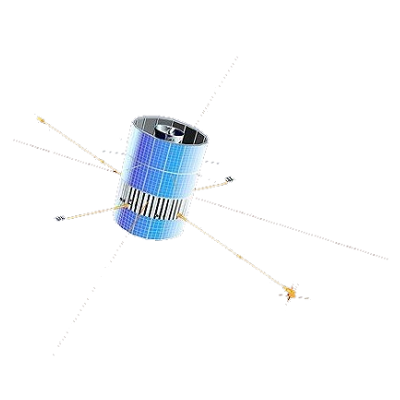Overview: Fundamental Technologies, LLC, provides data products for the Charged Particle Measurement Experiment (CPME) on board the IMP-8 spacecraft. The CPME has two major components, the Proton-Electron Telescope (PET) and five thin-window Geiger-Mueller (GM) tubes. The PET measures and identifies electrons, protons, alpha particles, M-nuclei, and Fe-group nuclei. The GM array measures both solar X-rays and the more intense galactic X-ray sources.
Mission Background: IMP-8 (IMP J/ Explorer 50), the last satellite of the IMP series, was launched by NASA on Oct. 26, 1973. The IMP-8 spacecraft was designed to measure magnetic fields, plasmas, and energetic charged particles of the Earth's magnetotail and magnetosheath and the near-Earth solar wind. IMP-8 has lived long past its life expectancy of ten years of operation; after 45+ years of operation in space, it is still functioning to this day.
| ACRONYM | TYPE OF INVESTIGATION |
|---|---|
| MAG | The geomagnetic tail, interplanetary medium, & boundary magnetic fields |
| GAF | DC electric fields in the solar wind and magnetosheath |
| IIOF | Magnetic field measurements |
| LAP | Ion and electron distributions |
| IOE | Fluxes of ions and electrons |
| PLA | Positive ions & electrons in the magnetotail, transition region, & solar wind |
| EPE | Fluxes of ions in energy channels from 0.05-0.30 MeV to 2.1-4.5 MeV |
| EECA | Energy per charge of incident ions between 100 and 1000 KeV/q |
| CPME | Proton fluxes from 0.29 to 140 MeV, & alpha particles from 0.64-52 MeV |
| GME | Fluxes/elemental identification for protons, alpha particles, and heavy ions |
| CAI | Composition and spectra measurements of galactic and solar cosmic rays |
| CHE | Nuclei, electrons, protons, and alpha particles of varying energy ranges |
Additional information at Fundamental Technologies, LLC:
Updated 8/8/19, Cameron Crane
QUICK FACTS
Destination: The IMP-8 spacecraft spends roughly half of its 12-day orbit in solar winds, with the other half spent studying the magnetosphere and magnetosheath of Earth.
Orbit: The IMP-8 spacecraft orbits in a geocentric elliptical orbit with an inclination varying from 0 to 55 degrees.


